Tanzania
Tanzania, nestled in the heart of East Africa, is a land of superlatives. With its iconic wildlife, diverse landscapes, and rich cultural heritage, it’s a destination that defies expectations.
Home to the magnificent Serengeti National Park, the Ngorongoro Crater, and the mesmerizing Mount Kilimanjaro, Tanzania offers unparalleled natural beauty.
The Great Migration, a wildlife spectacle unlike any other, unfolds here. But Tanzania is more than just its stunning wilderness; it’s a place where you can immerse yourself in the traditions of the Maasai people and explore the historical streets of Stone Town in Zanzibar. Tanzania is where the untamed and the ancient converge, making it a true African gem.
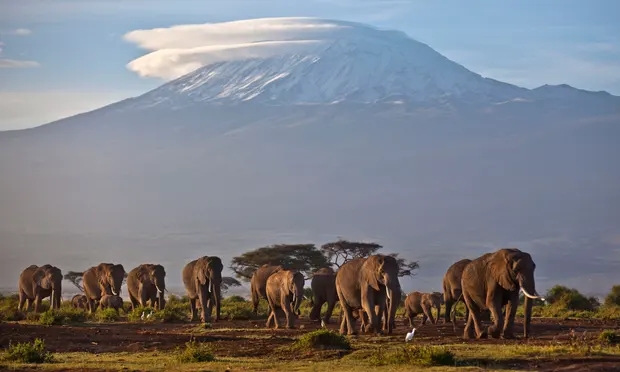
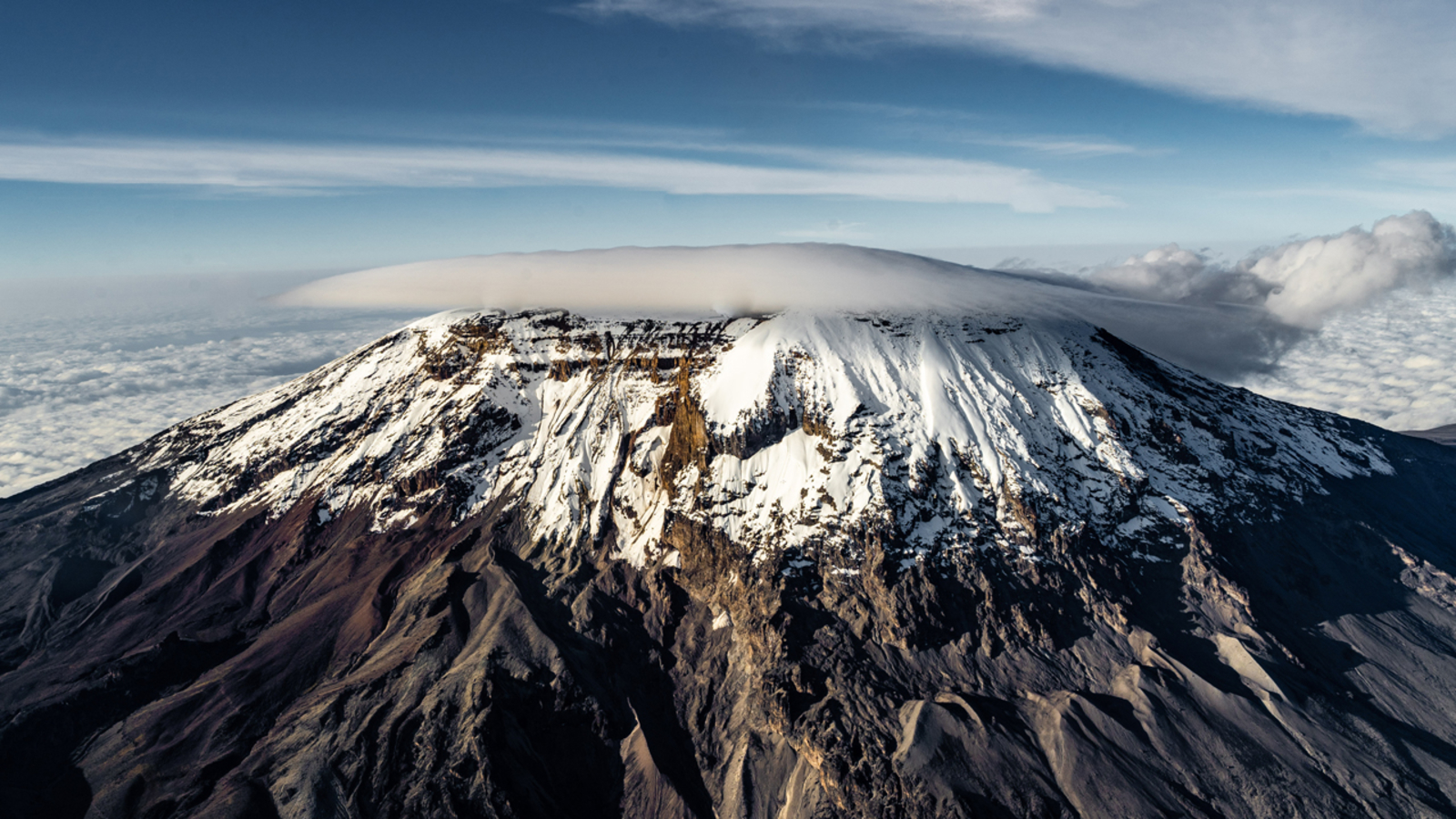
Mount Kilimanjaro
Mount Kilimanjaro is a dormant volcano located in Kilimanjaro Region of Tanzania. It has three volcanic cones: Kibo, Mawenzi, and Shira. It is the highest mountain in Africa and the highest single free-standing mountain above sea level in the world: 5,895 m above sea level and about 4,900 m above its plateau base.
Kilimanjaro is also one of the world’s highest volcanoes, and it’s the highest free-standing mountain on earth, rising from cultivated farmland on the lower levels, through lush rainforest to alpine meadows, and finally across a lunar landscape to the twin summits of Kibo and Mawenzi. Kilimanjaro’s third volcanic cone, Shira, is on the mountain’s western side.
The lower rainforest is home to many animals, including buffaloes, elephants, leopards and monkeys, and elands are occasionally seen in the saddle area between Kibo and Mawenzi.
Serengeti National Park
Serengeti National Park is best known for its abundance of animals and the great wildebeest migration, it stretches 5,700 sq miles stretching North to Kenya and bordering Lake Victoria to the West.
Serengeti has the highest concentration of large mammals on this planet and its famous known for its 2,500 Lions the largest concentration found anywhere. The park also has over 518 identified bird species where some of them are Eurasian migrants who are present in the European winter months from October to April.
Established in 1952, the Serengeti National Park in Tanzania is without a doubt the most famous wildlife sanctuary in the world. This is where you can see the greatest wildlife spectacle on earth – the migration of the zebra and wildebeest. The wildlife population in this vast park includes lions, elephants, rhinos, giraffes, cheetahs and countless different species of birds, the park is larger than Connecticut and listed as a UNESCO World Heritage Site. If you are in Tanzania, you should not miss visiting this world-renowned park.
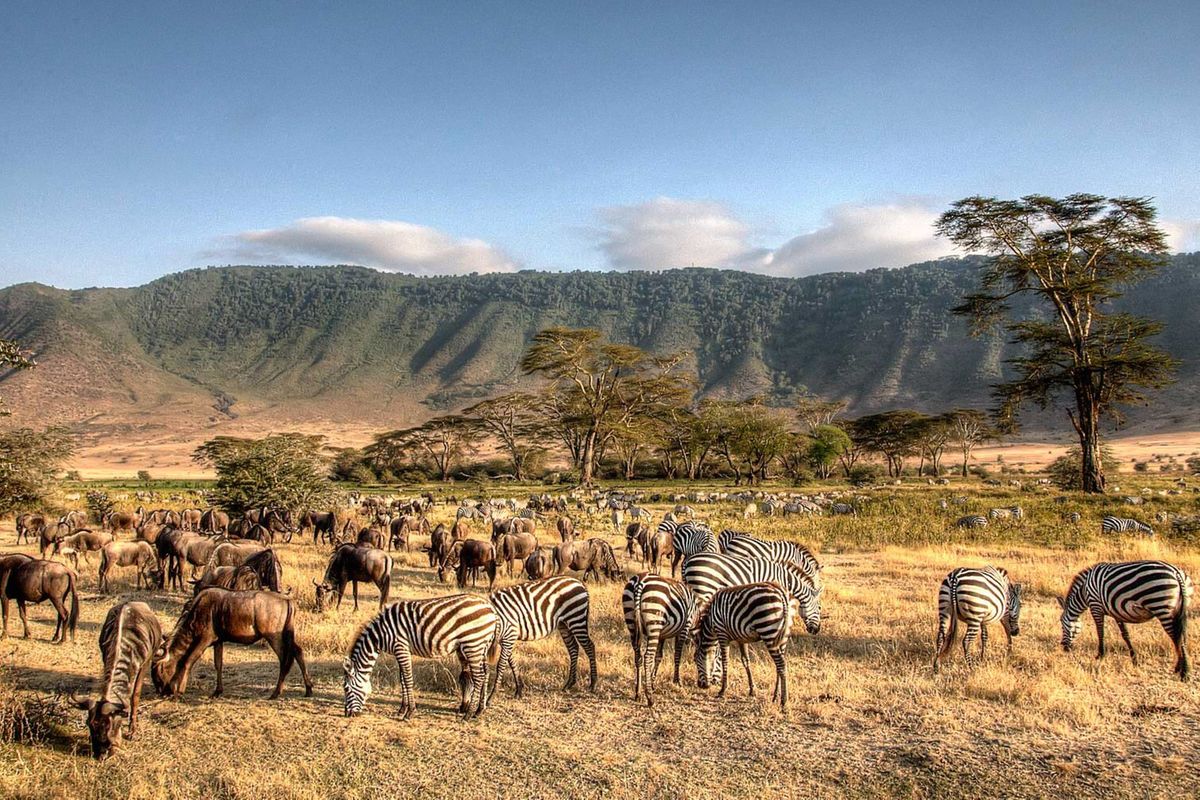
Although the Serengeti is home to the Big 5, it’s best known for being host to the Great Wildebeest Migration. This grand annual spectacle is when millions of wildebeest, followed by gazelle and zebra, seek greener pastures while dodging predators along the way. Their circuit journey continues south in the Serengeti before heading west, then north into the Maasai Mara, before returning to their starting point. Predators lurk on their heels, pouncing when they see the opportunity, making this journey packed with exhilarating wildlife sightings.
The Serengeti stage is set for the drama to unfold, with varying terrain ranging from volcanic grasslands to vast plains, interrupted by rocky outcrops, snaking rivers, and forests. Although it’s wild out there, the reserve is home to ultra-luxurious lodges, designed to give you the best seat in the house to admire the Serengeti’s show. With a thriving predator population and varied birdlife, there’s always something to see here, often around the rivers and watering holes where the animals gather to quench their thirst. With hippo and crocodile waiting to pounce, the water’s edge is the prime position to wait for action.
Whether it’s simply to observe a herd of elephant cooling down or lion and crocodile competing over food sources – there’s always action unfolding in the Serengeti.
Tarangire National Park
The Tarangire National Park is most popular for its large elephant herds and mini-wildlife migration that takes place during the dry season which sees about 250,000 animals enter the park. Ranking as the 6th largest National Park in Tanzania and covering an area of 2,600 square kilometers. Tarangire is the ideal park for those who want to explore beyond game drives. Walk through the savannah to study the smallest creatures and learn about tracking animals. Soar through the sky in a hot-air balloon at dawn or head out on a night drive to find nocturnal wildlife.

Selous Game Reserve
Secluded and off the beaten track, the Selous Game Reserve offers visitors a slice of undisturbed wilderness, teeming with a spectacular array of fauna and flora.
It was declared a World Heritage Site due to its dramatic landscapes and great diversity of wildlife. The Selous is one of the few big game reserves to allow hiking, offering wildlife enthusiasts the chance to explore Tanzania’s pristine landscapes on foot.
Large numbers of elephants, black rhinoceroses, cheetahs, giraffes, hippopotamuses and crocodiles live in this immense sanctuary, which measures 50,000 km2 and is relatively undisturbed by human impact. The park has a variety of vegetation zones, ranging from dense thickets to open wooded grasslands
Ngorongoro Conservation Area
The Ngorongoro Conservation Area spans vast expanses of highland plains, savanna, savanna woodlands and forests. Established in 1959 as a multiple land use area, with wildlife coexisting with semi-nomadic Maasai pastoralists practicing traditional livestock grazing, it includes the spectacular Ngorongoro Crater, the world’s largest caldera.
The property has global importance for biodiversity conservation due to the presence of globally threatened species, the density of wildlife inhabiting the area, and the annual migration of wildebeest, zebra, gazelles and other animals into the northern plains.
Extensive archaeological research has also yielded a long sequence of evidence of human evolution and human-environment dynamics, including early hominid footprints dating back 3.6 million years.
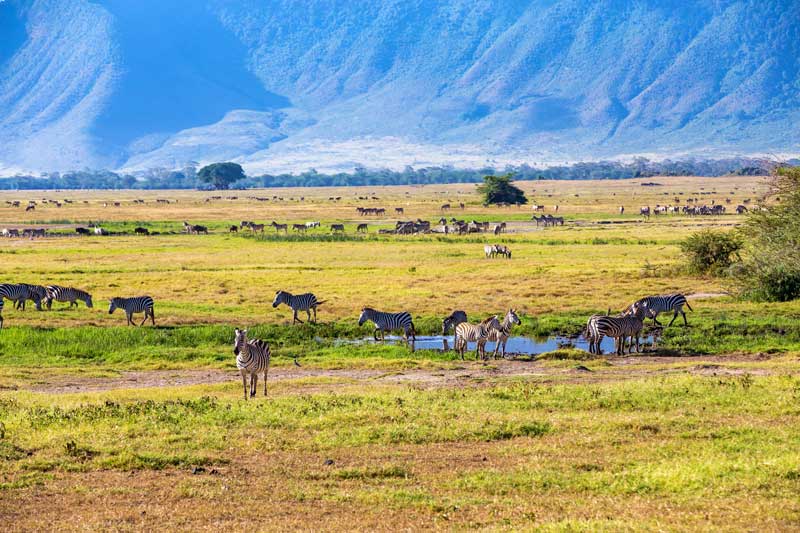
The Ngorongoro Crater in Northern Tanzania, once a gigantic volcano, is the largest intact caldera in the world. Some maintain that before it erupted, it would have been higher than Mt Kilimanjaro, the highest peak in Africa.
Today, long since having collapsed and eroded, it is an extensive highland area with the famous 600 m deep Ngorongoro Crater as its focal point. Nearly three million years old, the ancient caldera shelters one of the most beautiful wildlife havens on earth.
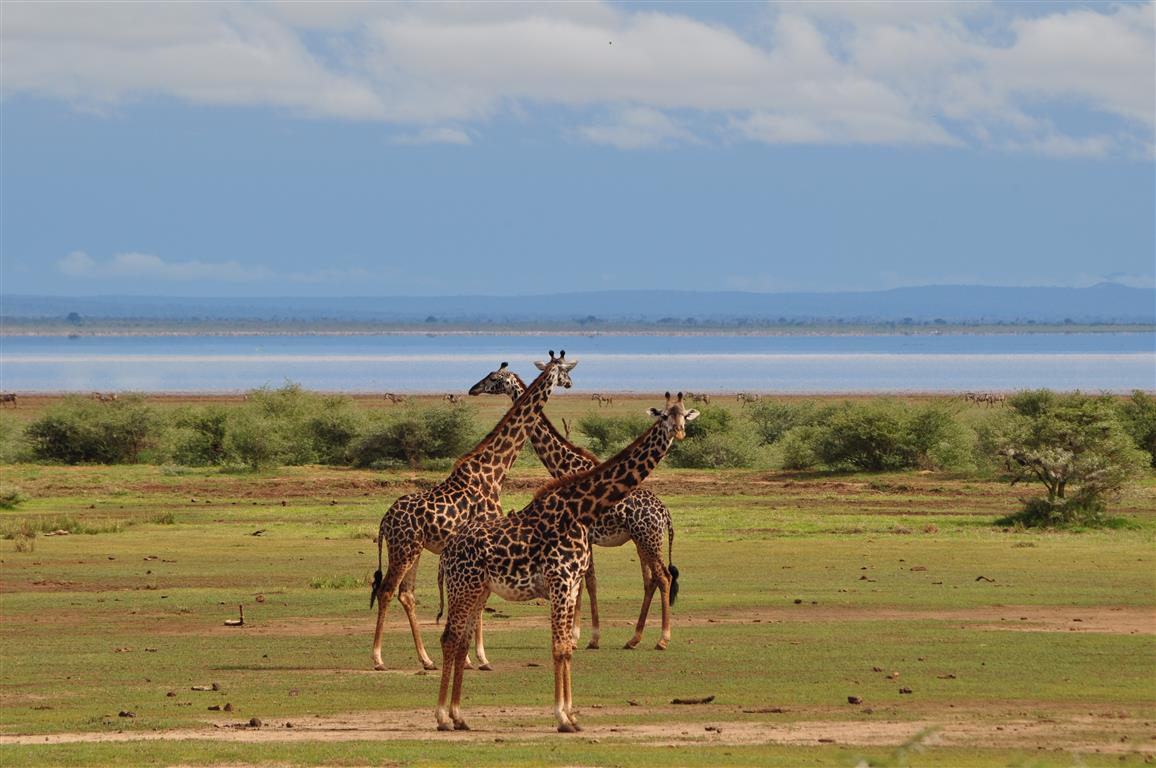
Lake Manyara National Park
Lake Manyara National Park provides a unique wilderness experience. Including diverse landscapes such as the Rift Valley soda lake, open grasslands, dense woodlands and stunning mountainsides. In the north of Tanzania, Lake Manyara National Park centres around its eponymous alkaline lake, a key habitat for hundreds of bird species. Between November and April, thousands of greater and lesser pink flamingos gather on its shores, along with pink-backed pelicans, yellow-billed storks, grey herons and pods of hippo.
Surrounding the lake are marshlands, grassy plains and acacia woodlands, home to tree-climbing lion and long-tusked elephant. Giraffe strut across the grasslands, where herds of buffalo, zebra and wildebeest graze. As well as enjoying game drives and walking safaris, you can visit the Maji Moto hot springs to soak in the warm, clear water under the shade of leafy trees.
Lake Manyara is only 90 minutes from Arusha by car and easy to combine with a safari in the Serengeti, Tarangire or the Ngorongoro Conservation Area.
